Laminate for tiles in the kitchen: features and design options
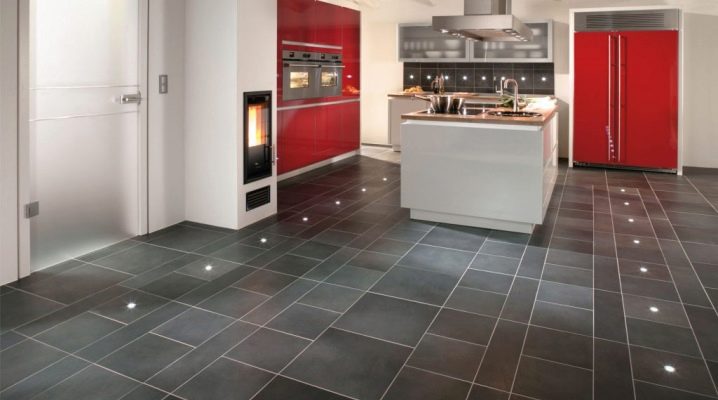
For a long time, they were afraid to use laminate when finishing the floor in kitchens. The main reason for this was that this type of coating is not able to withstand moisture. At the slightest hit of water on the surface of the laminate, it swells and loses all its properties. But thanks to modern technologies, a special class 33 kitchen laminate has appeared, treated with wax-based impregnations, which made it moisture resistant.
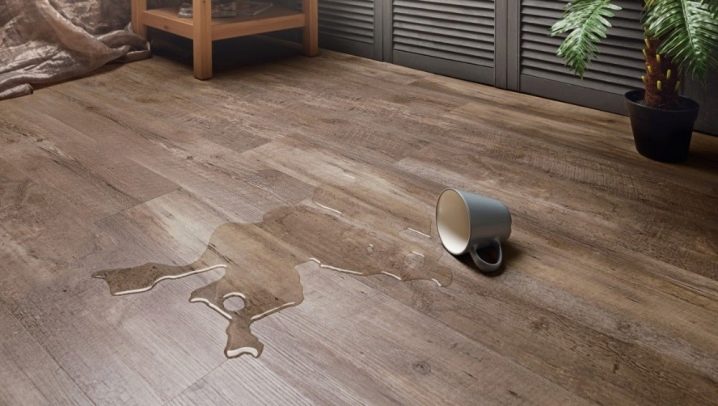
Specifications
Compared to other types of kitchen flooring, conventional laminate certainly loses out on all counts. But today, new-generation laminate coatings have appeared on the domestic market, which not only are not inferior to other coatings, but they also surpass them in some respects and have a number of advantages.
- The price of this type of coating is an order of magnitude lower than that of other materials.
- When installing laminate flooring in the kitchen, you will not experience any difficulties and problems. The installation process itself will take a little time.
- The material from which the 33 class laminate is made easily tolerates low and high temperatures. He also withstands possible changes in it.
- With the correct selection of the coating class, you will achieve the maximum degree of mechanical resistance.
- With this coating, you can imitate any surface of a natural material (granite, marble, quarrystone).
- Thanks to new technologies, it has become possible to produce a laminate imitating tiles with antistatic properties, which does not allow dust and dirt to accumulate on the surface. Therefore, sanitary cleaning of floors becomes very easy.
- The materials from which the laminate for the kitchen is made are resistant to UV rays and do not fade under the sun.
- The use of laminate in the kitchen makes it possible to install underfloor heating, and moisture resistance allows you to apply it over the entire kitchen area.
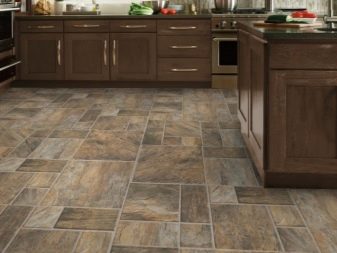
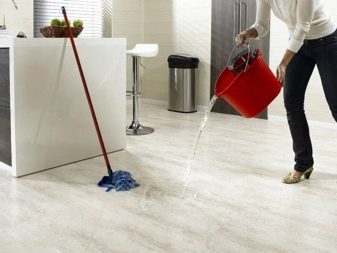
From the above, it follows that laminate is the best option for flooring in a kitchen. However, when going to buy it, it is worth remembering some of the disadvantages of this coverage.
- When installing a laminate in the form of tiles on the floor in the kitchen, seams are formed between adjacent panels. If moisture gets into these seams, the laminate can swell and the joint will disperse. To prevent this from happening, it is necessary to treat them with a special sealant.
- Be prepared for loud noises when walking. Therefore, during installation, it is necessary to lay a sound-insulating material, and then lay the coating.
- The durability of the laminate is slightly lower than that of ceramics. Therefore, you will have to change the flooring in the kitchen more often. These are additional financial costs.
- When using laminate flooring in residential premises, it is necessary to remember about environmental safety. To avoid unpleasant consequences, you must make sure before purchasing the material that it meets the safety class E1. This suggests that the formaldehyde content in this material does not exceed the norm (10 mg per 100 g) or is completely absent. This information should be contained in the instructions attached to the product.
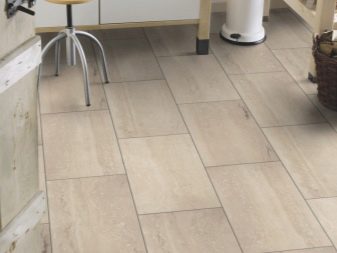
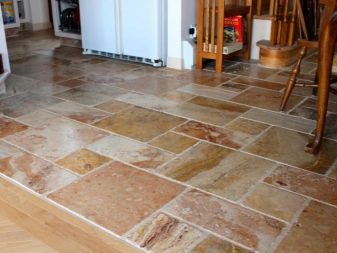
The most common kitchen floor covering is class 33 tile laminate with a thickness of up to 12 mm. The first digit "3" means that this coating has three layers, which are pressed under pressure at a high temperature.
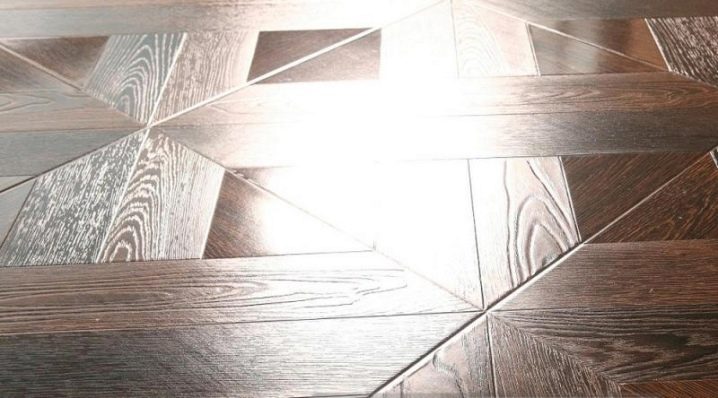
The first is a protective layer in the form of an acrylic or melamine film. These are two harmless substances that protect the laminate from mechanical damage. Modern technologies have learned to increase the strength of the protective layer. Thus, aluminum oxide increases the strength of the coating, but its presence affects the price of the product.
The second layer consists of paper with a pattern, pattern or texture applied to it. Thanks to the high art of typography, today it is possible to create any kind of cover that, at first glance, cannot be distinguished from natural.
The third is the main bearing layer. It depends on him how strong and durable the tile laminate for the kitchen will be. Usually it is made from MDF, chipboard or fiberboard. It is these materials that provide the coating with heat and sound insulation, strength.
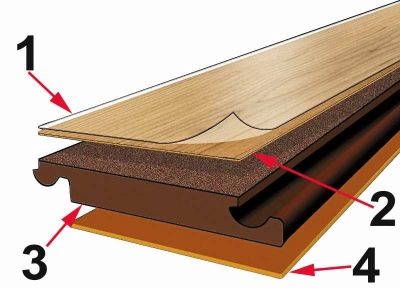
Also on this layer a lock joint is made, which can be cut directly into the body of the panel or separately.
The strength of the lock connection depends on:
- from the shape of the groove and the depth of its manufacture;
- brands of impregnation and the method of applying it to the laminate (internal or surface);
- the thickness of the base layer (the most reliable connection is obtained if a thick layer is used).
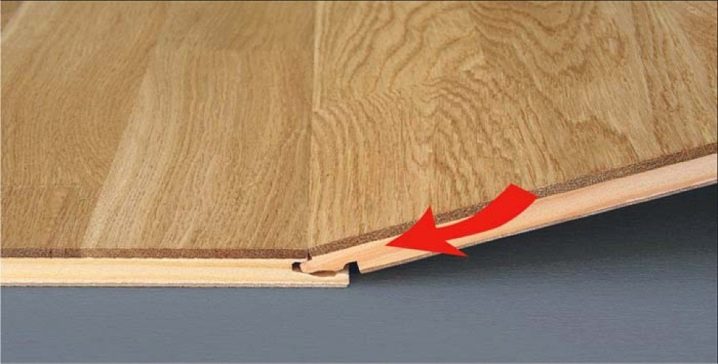
Selection rules
When choosing a laminate in the form of a tile for the kitchen, it is necessary to take into account some of the features of this material so that you do not have to re-grind the coating in the future.
- When buying, ask the seller for a certificate for the selected coverage. Study it carefully. It is necessary that the 33 class is indicated in it, which will provide your coating with increased wear resistance, which means that the material you have chosen will last a long time.
- Also, the panel density indicator should be indicated there. Its value should not be lower than 900 kg / m. This will provide the coating with optimal strength.
- Find in the certificate information that the back of the product is also treated with moisture resistant impregnation. This will protect the laminate from moisture.
- It is necessary to check the wax treatment of the locks. To do this, run your fingernail along the surface of the lock. If you feel wax, then the product has been surface treated. If wax is not felt, and the appearance of the lock has wet shades, then the coating has been internally treated. Internal treatment of the coating is preferable, it is the most durable and protects the laminate longer.
- It is best to use PVC materials as a substrate for installing a thick laminate in the form of tiles in the kitchen.
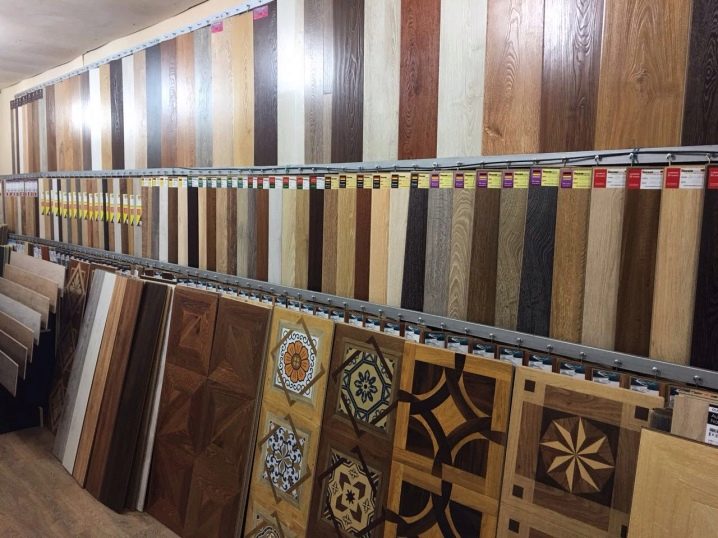
Appearance
Thanks to the development of the printing industry, it has become possible to create a huge number of all kinds of flooring designs. Laminate is no exception. When choosing a coating for the kitchen, this task becomes even more insoluble due to the wealth of choice. Therefore, it is possible to divide the entire range of this material into conditional groups.
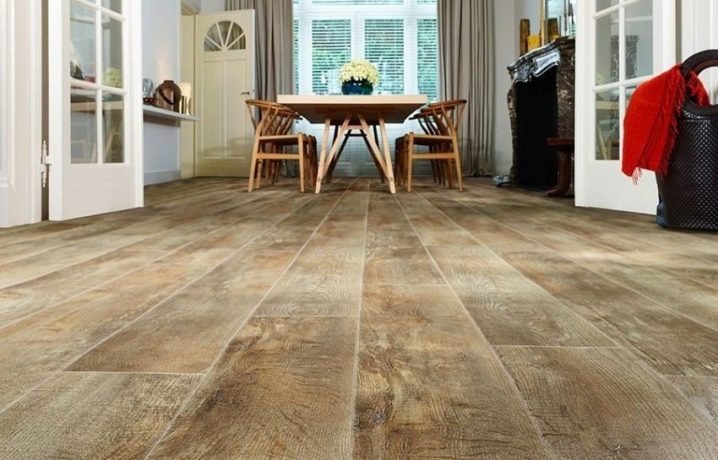
The most popular kitchen laminate is ceramic imitation tile. This material is suitable for any kitchen interior, therefore it is considered universal. Visually, such a coating looks like ceramic, but it is more pleasant to walk on it than on tiles. The surface of such a coating is made with a slight roughness for the greatest safety.
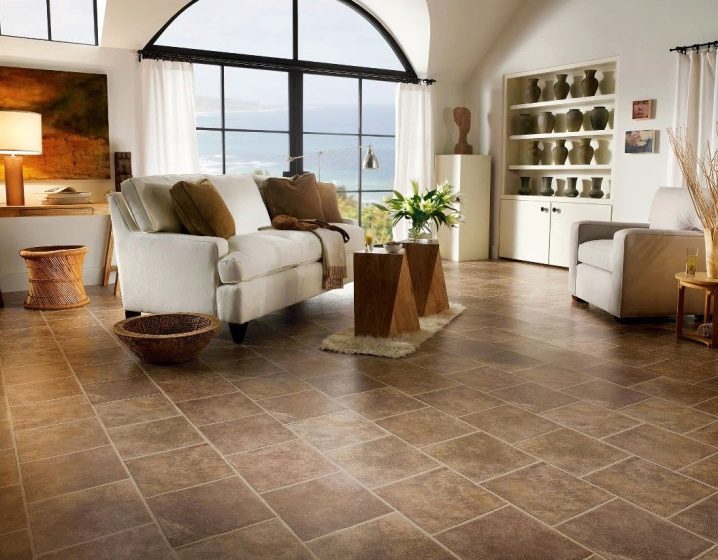
Another type of tile laminate is an imitation of natural materials. Until recently, the most widespread were granite, marble, and stone coatings. Nowadays, laminate with a wood texture has become widespread.

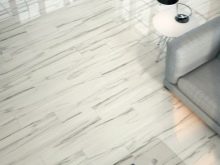

The fact is that the very structure of wood gives great opportunities for a flight of imagination when creating an ornament on the floor. By placing the tiles in different directions and at different angles, we get a completely different shade and pattern. And in combination with kitchen furniture made in woody colors, the kitchen becomes cozy and invites you to relax.


Fans of abstraction will love the tile laminate with unpretentious chaotic patterns. Here everything will depend on your imagination - you can play with the colors of the tiles, sizes, patterns.
If you finally decided to equip your kitchen, and the floor on it is made of tiled laminate, then these tips will help you understand all the variety of this material.
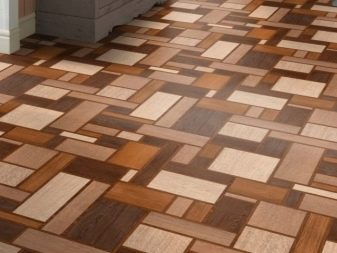
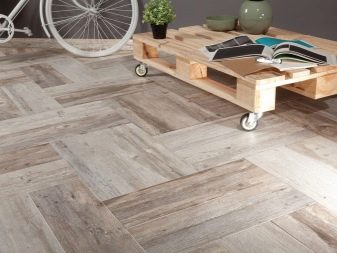
For more information on laminate flooring for kitchen tiles, see the video below.










The comment was sent successfully.